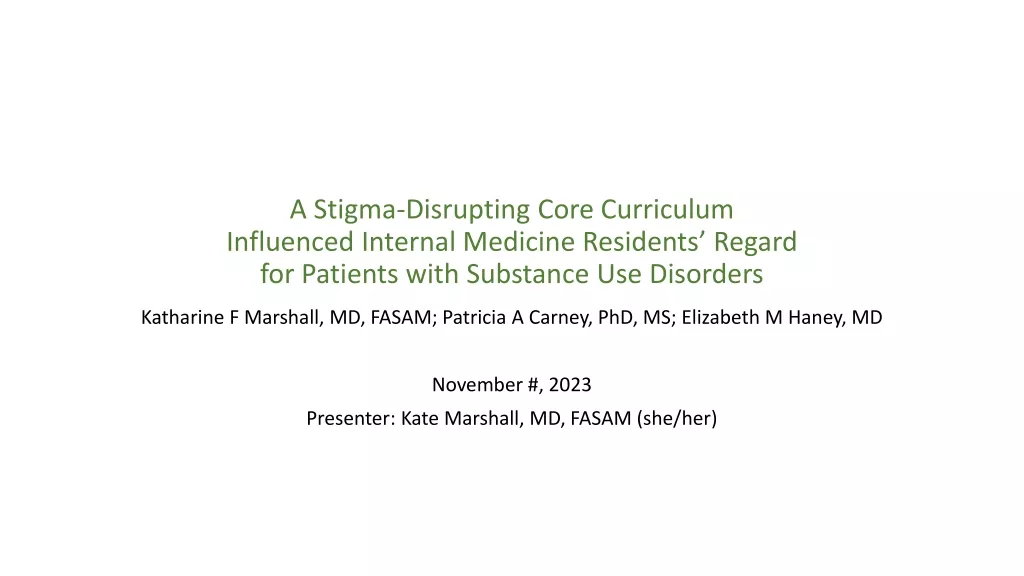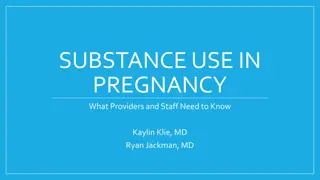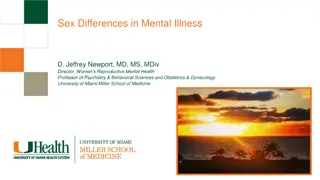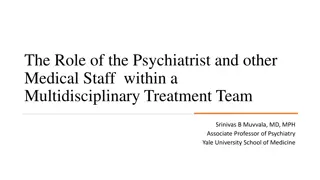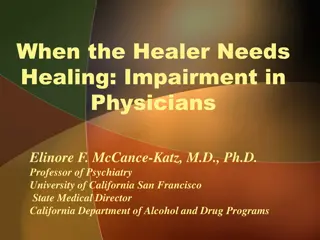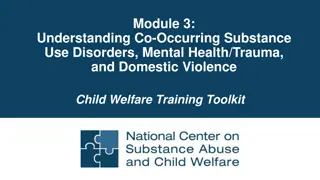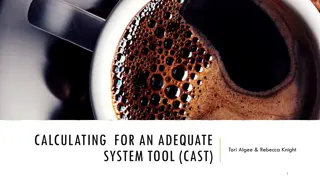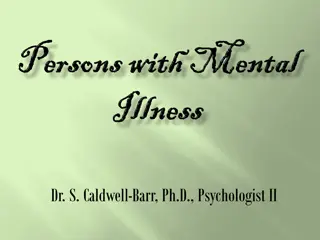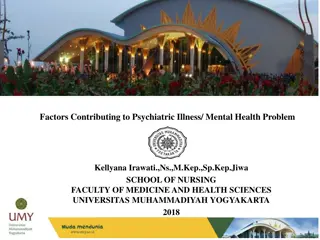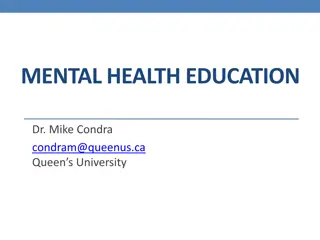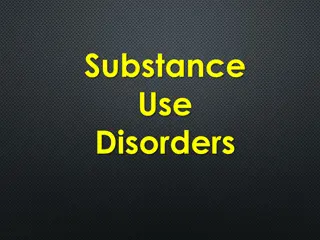Understanding Dual Diagnosis: Link Between Substance Use Disorders and Mental Illness
Dual diagnosis, also known as co-occurring disorders, refers to the simultaneous presence of substance use disorders and mental illness in individuals. This presentation delves into the definitions, treatment options, and ways to support communities to prevent overdose. Factors contributing to the comorbidity between these disorders are explored, shedding light on the complex relationship between mental health and substance abuse.
Download Presentation

Please find below an Image/Link to download the presentation.
The content on the website is provided AS IS for your information and personal use only. It may not be sold, licensed, or shared on other websites without obtaining consent from the author. Download presentation by click this link. If you encounter any issues during the download, it is possible that the publisher has removed the file from their server.
E N D
Presentation Transcript
Pharm SUD ECHO Didactic Presentation: Caring for Dual Diagnosis Patients in Indian Country CDR Sharyl Trail, PsyD Deputy Regional Administrator HRSA Region6 Dallas strail@hrsa.gov
A little bit about your presenter.. Licensed Clinical Psychologist HRSA Region 6 Deputy Regional Administrator - May 2021 12 years as a psychologist Officer in the US Public Health Service Commissioned Corps. Clinician, clinical supervisor, and healthcare administrator at four FQHC look-a-like Indian Health Service PC clinics. NHSC Loan Award Recipient Deployed multiple times to natural disasters and COVID response providing Force Health Protection 2
Learning Objectives Define dual diagnosis including primary symptoms and treatment options. Identify treatment models including Medication Assisted Treatment (MAT) & Integrated Care Learn how to support communities and prevent overdose.
Klamath Tribal Health, KF OR BH Director/Clinician 6
Oneida Nation Green Bay, WI Dir. Of Training/Clinician 7
Dual Diagnosis/Co-occurring Disorders NAMI Definition: Substance use disorders the repeated misuse of alcohol and/or drugs often occur simultaneously in individuals with mental illness, usually to cope with overwhelming symptoms. Dual-Diagnosis-FS.pdf (nami.org) NIH: When two disorders or illnesses occur in the same person, simultaneously or sequentially, they are described as comorbid. Comorbidity also implies that the illnesses interact, affecting the course and prognosis of both. Part 1: The Connection Between Substance Use Disorders and Mental Illness | National Institute on Drug Abuse (NIDA) (nih.gov)
Causality & Directionality Three main pathways can contribute to the comorbidity between substance use disorders and mental illnesses: 1. Common risk factors can contribute to both mental illness and substance use and addiction. 2. Mental illness may contribute to substance use and addiction. 3. Substance use and addiction can contribute to the development of mental illness.
Dual Diagnosis Facts About half of those who experience a mental illness during their lives will also experience a substance use disorder and vice versa (including youth) Drug Use and Mental Health Disorders in Childhood or Adolescence Increases Later Risk Some research has found that mental illness may precede a substance use disorder, suggesting that better diagnosis of youth mental illness may help reduce comorbidity. Untreated Childhood ADHD Can Increase Later Risk of Drug Problems
Risk Factors for Co-occurring Disorders Genetic Vulnerabilities (Family History) Epigenetic Influences (powerful ways that genetic and environmental factors interact at the molecular level.) Intergenerational Transmission Environmental Influences chronic stress, trauma, and adverse childhood experiences Stress Trauma and Adverse Childhood Experiences
Treatments for comorbid substance use disorder and mental health conditions Collaboration between clinical providers (integrated care/screening) and organizations that provide supportive services, education, community safety (interdisciplinary & Interagency). Levels of Care: Detox; Inpatient; Intensive Outpatient; Outpatient; Education Treatment and Recovery Best Practices | Best Practices in Use (ihs.gov) DBH Programs | Division of Behavioral Health (ihs.gov) Information and Tools for Providers | Alcohol and Substance Abuse Program (ihs.gov)
Co-occurring Disorders and Pain Chronic pain is a physical problem that has a complex relationship with substance use disorders. Chronic pain and associated emotional distress are thought to dysregulate the brain s stress and reward circuitry, increasing the risk for opioid use disorder. Pain Management | Indian Health Service (IHS) Chronic pain and childhood trauma - Harvard Health TIP 54: Managing Chronic Pain in Adults With or in Recovery From Substance Use Disorders | SAMHSA
Prevention and Community Support GONA Gathering of Native Americans Belonging, mastery, interdependence, generosity Gathering of Native Americans Fact Sheet (samhsa.gov) Project Venture Youth primary prevention Be here, be safe, speak your truth, let go and move on Project Venture Adventure with an Indigenous Mind Positive Indian Parenting About PIP NICWA
THANK YOU! Reach out any time. strail@hrsa.gov CDR Sharyl Trail, PsyD



